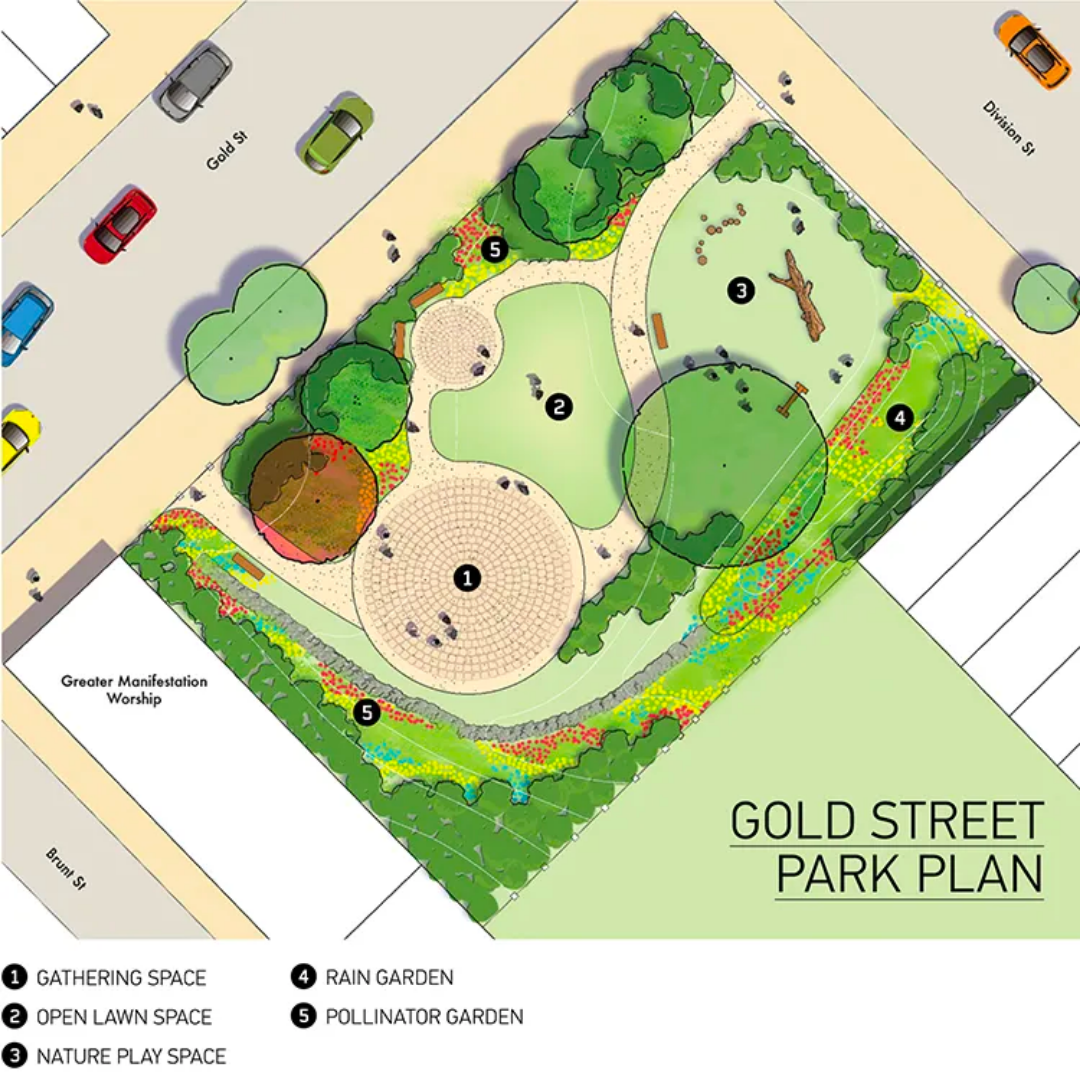Stories
February 3, 2022Pocket Parks — Turning Vacant Lots in Community Assets

Pocket parks are a great way to bring access and benefits from green space closer to home for many.
Pocket Park on Gold Street is an example. Once upon a time, it was just another vacant lot, but with some collaboration, this community park in Druid Heights has been transformed into something beautiful!
Laura Robinson, now an NDC Landscape Design Program Manager, was one of four graduate landscape architecture students at the University of Maryland who collaborated on the original design in 2015.
“There was funding from the city, the Chesapeake Bay Trust, and others, and there was the pro bono design from the University of Maryland. Even though it was a longer process (2015 to 2021, from conception to construction), I think it was worth it. It was so much
more personal to the neighborhood.”

“Gold Street Park is a great example of a community-led project and what can happen when you have a really great integration of a lot of partners.”
— Laura Robinson


By definition, a pocket park is just a very small public open space.
The significance of creating pocket parks is that they take a small, usually vacant or underutilized space, and turn it into an asset for a neighborhood.
Pocket parks tend to pop up in community focused design because the small scale makes them a little more manageable (cost and programmatically). A small sized space can only allow for so many features, so it helps narrow down focus and scope and keeps costs down. Despite their size, they can have a huge impact, when they’re placed in areas that might be under resourced in public green spaces.
“The act of reclaiming a vacant lot or beautifying a neglected open space — by even a few residents on a single block — can serve as a catalyst for positive change and growth throughout a community.”
— Parks and People Foundation, 2021
